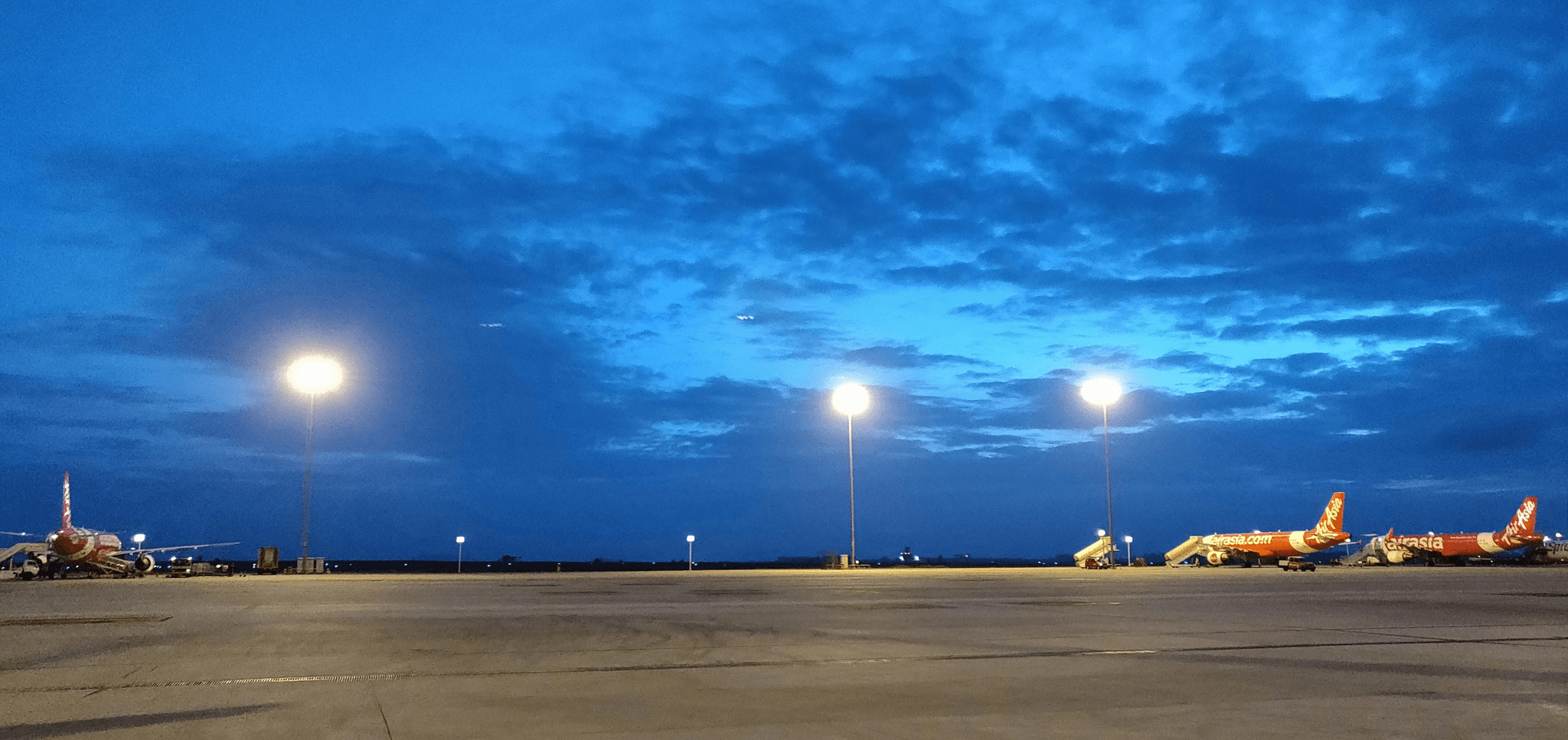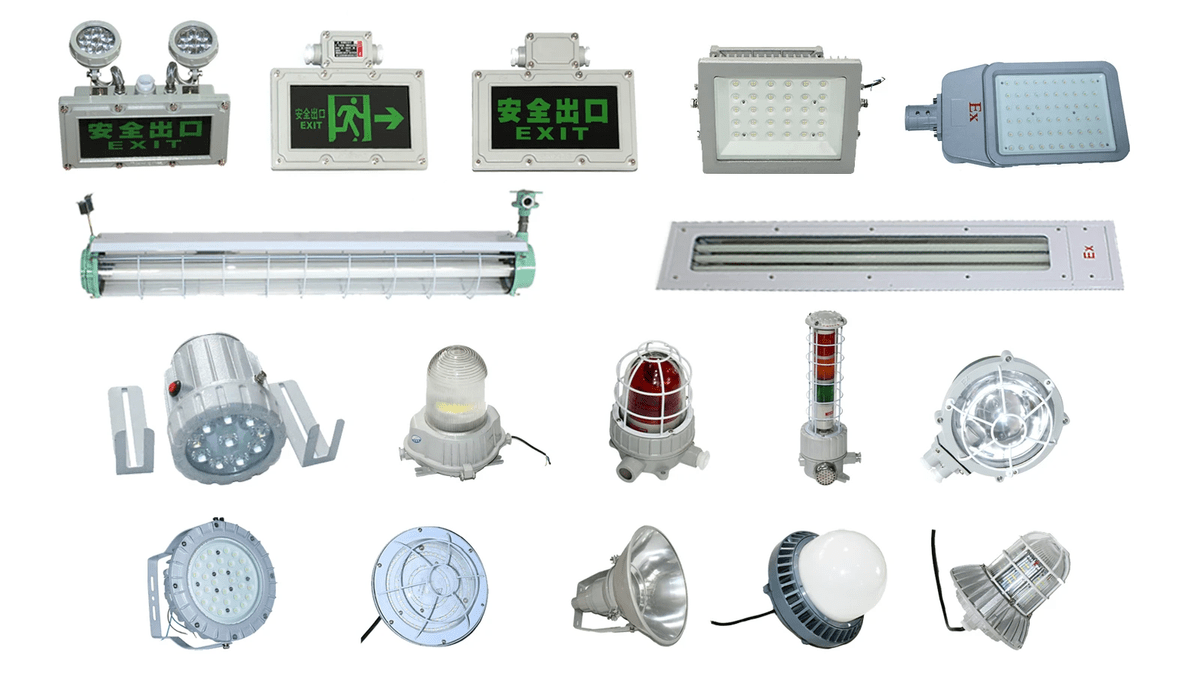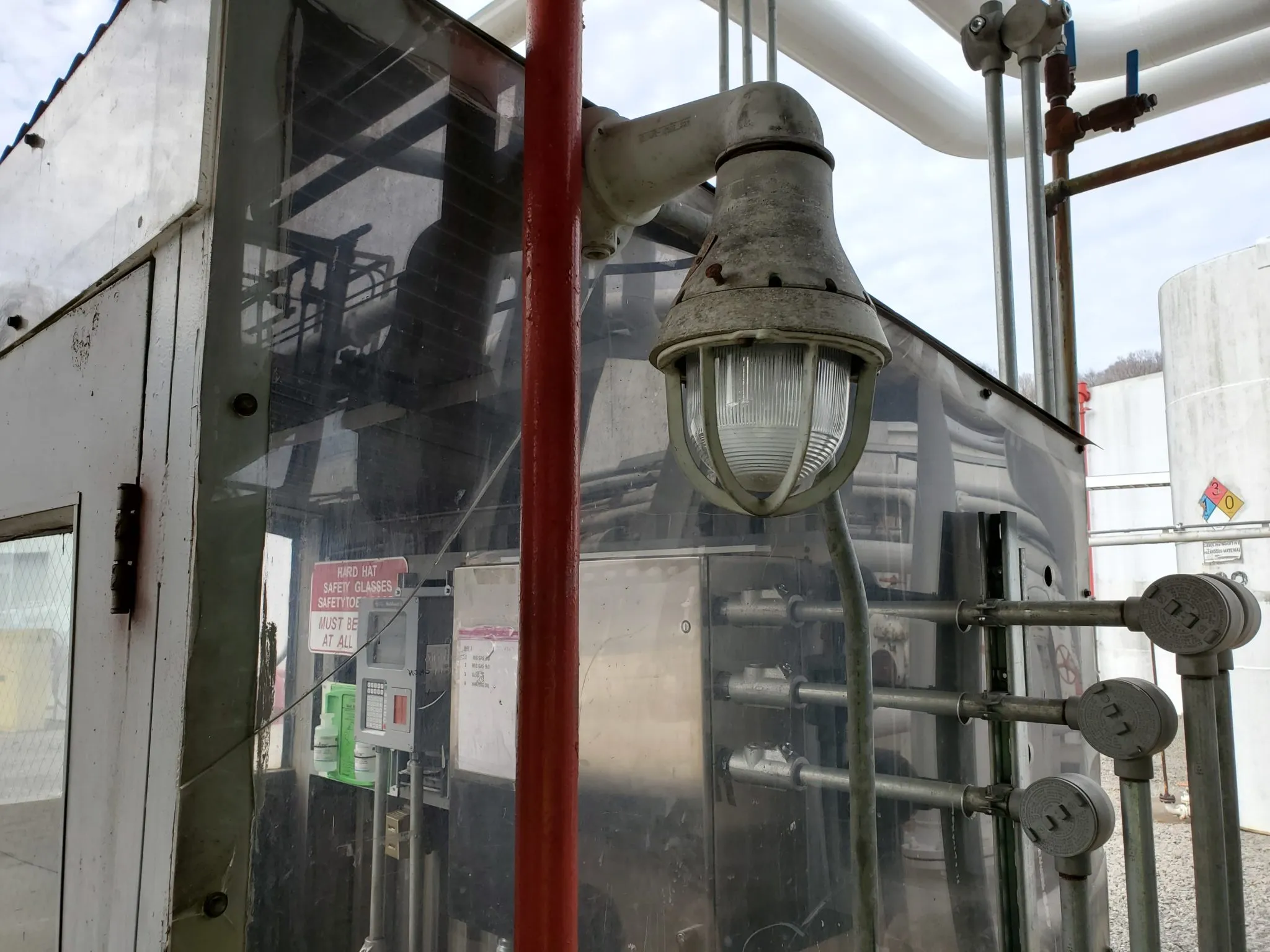Introduction

Aviation lighting plays a crucial role in ensuring the safety and efficiency of airport operations. From guiding aircraft during takeoff and landing to illuminating hangars and taxiways, effective lighting systems are essential for both day and night operations. Understanding the various types of aviation lighting, including high mast lighting systems and explosion proof lighting, is vital for airport managers aiming to enhance safety and functionality.
Understanding the Importance of Aviation Lighting
The importance of aviation lighting cannot be overstated; it is a fundamental aspect that contributes to operational safety in airports worldwide. Properly designed aviation lighting systems not only help pilots navigate but also ensure that ground crews can work efficiently in low visibility conditions. When considering what is the best high mast lighting system or what is an airport high mast lighting system, it becomes clear that these solutions significantly impact overall safety.
Key Components of Airport Lighting Systems
Airport lighting systems consist of several key components designed to meet specific operational needs. These include runway lights, taxiway lights, approach lights, and industrial lighting used in hangars for maintenance activities. Each component must be carefully selected to comply with regulations while ensuring they effectively illuminate critical areas like the hangar's hazardous area.
Safety Considerations for Aviation Lighting
Safety considerations are paramount when designing or upgrading aviation lighting systems at airports. It’s essential to address factors such as visibility range, light intensity, and compliance with safety standards like those governing explosion proof lighting in areas prone to hazardous materials. By prioritizing these considerations, airports can create a safer environment for both aircraft operations and personnel working on-site.
Overview of Aviation Lighting

Aviation lighting is a critical element in ensuring the safety and efficiency of airport operations. It encompasses various types of lighting systems designed to illuminate runways, taxiways, hangars, and other vital areas within an airport. Understanding the different types of aviation lighting and their roles can significantly enhance both operational effectiveness and safety.
Types of Aviation Lighting
There are several types of aviation lighting that play crucial roles in airport operations. These include runway edge lights, threshold lights, approach lights, and high mast lighting systems. Each type serves a specific purpose; for instance, what is an airport high mast lighting system? It’s designed to provide broad illumination over large areas such as parking lots or maintenance facilities, enhancing visibility during night operations.
In addition to standard runway lights, explosion proof lighting is particularly important in hazardous areas where flammable materials may be present. This specialized lighting ensures safety while maintaining functionality in potentially dangerous environments. Industrial lighting also plays a vital role in hangars and service areas by providing adequate brightness for maintenance tasks while adhering to safety standards.
The Role of Aviation Lighting in Safety
Aviation lighting is integral to maintaining safe flight operations at airports around the world. Properly illuminated runways and taxiways help pilots navigate safely during takeoff and landing phases, reducing the risk of accidents significantly. Furthermore, effective use of industrial lighting ensures that ground crew members can perform their duties safely without compromising visibility.
The importance of understanding what is the hangar's hazardous area cannot be overstated; these zones require specialized explosion proof lighting to prevent ignition hazards from occurring due to electrical equipment malfunctions or environmental factors. By implementing appropriate aviation lighting systems tailored for specific needs, airports can enhance overall safety for both personnel and aircraft operations alike.
Regulations Governing Aviation Lighting
Regulations governing aviation lighting are established by national and international authorities such as the Federal Aviation Administration (FAA) and the International Civil Aviation Organization (ICAO). These regulations set standards for installation, maintenance, intensity levels, color specifications, and more—ensuring that all aspects meet stringent safety requirements. Compliance with these regulations not only helps maintain operational integrity but also enhances public confidence in air travel.
Additionally, understanding what is the best high mast lighting system involves knowing how it aligns with regulatory standards while delivering optimal performance across large areas like aircraft parking zones or cargo facilities. Airports must remain vigilant about adhering to these guidelines when selecting industrial or explosion proof lighting solutions as well since they directly impact safety protocols within hazardous environments.
High Mast Lighting Systems

High mast lighting systems are essential for providing illumination in large areas like airport runways, taxiways, and parking lots. These towering fixtures can reach heights of 100 feet or more, ensuring that every corner is well-lit and safe for nighttime operations. When considering aviation lighting solutions, high mast systems stand out due to their efficiency and broad coverage.
What is the Best High Mast Lighting System?
Determining what is the best high mast lighting system involves evaluating several factors such as brightness, energy efficiency, and durability. Modern options often incorporate LED technology, which not only provides superior illumination but also reduces energy consumption significantly compared to traditional lighting sources. Additionally, a robust design that withstands harsh weather conditions is crucial for ensuring long-term performance in an airport environment.
Advantages of High Mast Lighting
The advantages of high mast lighting extend beyond just illuminating vast spaces; they also enhance safety and operational efficiency at airports. With fewer poles required due to their height and spread of light, these systems minimize obstacles on the ground while maximizing visibility for pilots and ground crew alike. Furthermore, many high mast systems are designed with automated controls that adjust brightness based on ambient light levels, further improving energy savings—a critical consideration in aviation lighting.
Choosing the Right System for Your Airport
When choosing the right high mast lighting system for your airport, it's essential to consider factors such as layout, specific use cases (like runway versus hangar areas), and compliance with safety regulations including those related to Explosion Proof Lighting where necessary. Understanding what is an airport high mast lighting system entails recognizing its role in accommodating not only passenger flights but also cargo operations that may require different illumination needs. Collaborating with professionals who specialize in industrial lighting can help you navigate these complexities effectively while ensuring that your chosen system meets all regulatory standards.
Explosion Proof Lighting in Airports

In the world of aviation lighting, safety is paramount, especially in environments where flammable gases or vapors may be present. This is where explosion proof lighting comes into play, designed to operate safely in hazardous conditions without igniting any surrounding materials. Understanding what explosion proof lighting entails and its applications can significantly enhance safety measures at airports.
What is Explosion Proof Lighting?
Explosion proof lighting refers to specialized fixtures engineered to prevent the ignition of explosive atmospheres that may arise from flammable gases, vapors, or dust. These lights are constructed with robust materials and sealed designs that contain any potential explosions within the fixture itself. The importance of this type of industrial lighting cannot be overstated; it ensures that areas like hangars and maintenance facilities remain safe for personnel while maintaining adequate visibility.
Applications of Explosion Proof Lighting
Explosion proof lighting finds its niche in various areas within an airport setting, particularly in zones designated as hazardous areas. For instance, these lights are essential in fueling stations and maintenance hangars where volatile substances might be present. By utilizing explosion proof fixtures, airports can mitigate risks associated with aviation lighting failures, ensuring that operations continue smoothly without compromising safety standards.
Compliance and Safety Standards
Compliance with safety standards is crucial when implementing explosion proof lighting systems in airports. Regulatory bodies such as the National Fire Protection Association (NFPA) and the International Electrotechnical Commission (IEC) set stringent guidelines to ensure these systems function effectively under hazardous conditions. Meeting these compliance requirements not only enhances safety but also reassures airport operators about their commitment to providing a secure environment for both workers and aircraft.
The Role of Industrial Lighting

Industrial lighting plays a pivotal role in the operational efficiency and safety of airport hangars. Proper illumination not only enhances visibility for maintenance and inspections but also ensures that all activities are conducted safely, reducing the risk of accidents. With a variety of options available, selecting the right industrial lighting system is essential for optimizing performance in these critical areas.
Importance of Industrial Lighting in Hangars
In hangars, industrial lighting is crucial for both functionality and safety. Adequate lighting allows ground crew personnel to perform maintenance checks efficiently, ensuring that every aircraft receives the attention it requires without compromising safety standards. Moreover, effective aviation lighting minimizes shadows and dark spots, which can lead to potential hazards during aircraft servicing or emergencies.
The importance of properly designed aviation lighting systems cannot be overstated; they contribute significantly to operational effectiveness while ensuring compliance with safety regulations. When considering what is the hangar's hazardous area, it's essential to identify zones where flammable materials might be present and ensure that appropriate explosion proof lighting is installed to mitigate risks. Ultimately, investing in quality industrial lighting translates into improved workflow and enhanced safety protocols within airport facilities.
What is an Airport High Mast Lighting System?
An airport high mast lighting system refers to tall poles equipped with multiple lights designed to illuminate large areas effectively. These systems are particularly beneficial for enhancing visibility on runways, taxiways, and parking areas during nighttime operations or adverse weather conditions. The question often arises: what is the best high mast lighting system? It typically involves considering factors like energy efficiency, light distribution patterns, and durability against environmental elements.
High mast systems provide uniform illumination over extensive spaces while minimizing glare for pilots approaching or departing from an airport. They can also accommodate various types of aviation lighting fixtures such as LED lights or metal halide lamps depending on specific requirements and budget constraints. By strategically placing these systems throughout an airport’s operational area, facilities can ensure optimal visibility while adhering to regulatory guidelines governing aviation lighting.
Choosing Industrial Lighting for Various Areas
Choosing industrial lighting requires careful consideration based on specific needs across different areas of an airport facility. Factors such as ceiling height in hangars or outdoor environments should guide decisions regarding fixture types—whether opting for high bay lights indoors or robust floodlights outdoors will depend on application requirements. Additionally, understanding what is an airport high mast lighting system can help inform choices when illuminating vast open spaces like runway perimeters.
It's also vital to consider energy efficiency when selecting aviation lighting solutions; LED options offer longevity and lower operating costs compared to traditional incandescent bulbs while providing adequate brightness levels required by FAA regulations. Furthermore, integrating explosion proof lighting in designated hazardous areas ensures compliance with safety standards while protecting personnel from potential accidents involving flammable substances commonly found around aircraft fuel sources.
Ultimately, choosing the right combination of industrial lights tailored for each zone will enhance overall functionality while maintaining a safe working environment within airports.
Hangar Lighting Considerations

When it comes to aviation lighting, hangars present unique challenges that must be addressed to ensure safety and functionality. Understanding the specific requirements of hangar lighting is crucial, particularly in hazardous areas where flammable materials may be present. This section will explore what constitutes a hangar's hazardous area, factors influencing effective lighting solutions, and recommended systems that meet the stringent demands of aviation environments.
What is the Hangar's Hazardous Area?
A hangar's hazardous area refers to zones where flammable gases, vapors, or dust may accumulate due to aviation activities. These areas pose significant risks if not properly illuminated with explosion proof lighting that can withstand potential hazards without igniting any combustible materials. Identifying these zones is essential for compliance with safety regulations and ensuring that personnel working in these environments are protected.
In aviation settings, hazardous areas are often defined by the presence of fuel storage or maintenance activities involving volatile substances. Such locations require specialized industrial lighting designed for safety and efficiency. Understanding what constitutes a hangar's hazardous area helps in selecting appropriate lighting solutions that enhance visibility while minimizing risk.
Factors to Consider in Hangar Lighting
When choosing aviation lighting for hangars, several factors come into play to ensure optimal performance and safety. First and foremost is compliance with local regulations governing explosion proof lighting; this ensures adherence to industry standards designed to protect both workers and equipment from potential hazards. Additionally, consideration must be given to the layout of the hangar itself—high ceilings may necessitate different types of fixtures compared to lower spaces.
Another critical factor is energy efficiency; modern industrial lighting solutions should minimize energy consumption while providing adequate illumination levels for various tasks within the hangar environment. The choice between LED versus traditional bulb options can significantly impact long-term operational costs as well as maintenance requirements. Moreover, flexibility in design allows for customized layouts that cater specifically to different workstations within the hangar.
Finally, durability cannot be overlooked; given the demanding conditions typical of aviation maintenance facilities—including temperature fluctuations and exposure to chemicals—lighting fixtures must be robust enough to withstand these challenges without sacrificing performance or safety standards.
Recommended Solutions for Hangar Lighting
For effective illumination in aircraft hangars, several recommended solutions stand out among available options in aviation lighting technology today. Explosion proof lighting systems are ideal choices for hazardous areas due to their ability to contain sparks or heat generated during operation safely within designated enclosures—thereby preventing ignition of surrounding flammable materials.
A combination of high mast lighting systems can also enhance visibility across expansive spaces typical in large aircraft maintenance facilities—this addresses questions like What is an airport high mast lighting system? by providing powerful overhead illumination capable of reaching significant heights while minimizing shadows on work surfaces below.
In addition, incorporating smart controls enables operators not only greater flexibility but also real-time monitoring capabilities which contribute towards improved energy management practices over time—a vital consideration when striving towards sustainability goals within airport operations overall! Partnering with experts such as Jinrong ensures access not just innovative products but also tailored solutions aligned precisely with specific operational needs!
Conclusion
As we wrap up our exploration of aviation lighting, it’s clear that the field is evolving rapidly, driven by innovations and a steadfast commitment to safety. From high mast lighting systems to specialized explosion-proof lighting, the advancements in technology are making airports safer and more efficient than ever. Understanding these developments is crucial for airport operators who want to stay ahead of the curve.
Innovations in Aviation Lighting Technology
Recent innovations in aviation lighting technology have revolutionized how we approach airport safety and efficiency. LED technology is now at the forefront, providing brighter illumination while consuming less energy—an essential factor for any modern airport looking to reduce operational costs. Additionally, smart lighting systems equipped with sensors can adapt to changing weather conditions and traffic patterns, ensuring optimal visibility at all times.
The integration of automation into aviation lighting systems has also improved reliability and maintenance schedules. By utilizing predictive analytics, airports can anticipate potential issues before they become costly problems. These innovations not only enhance safety but also contribute to sustainability goals within the aviation industry.
Future Trends in Airport Lighting Systems
Looking ahead, several key trends are shaping the future of airport lighting systems. First on the list is an increased focus on energy efficiency; airports are investing heavily in renewable energy sources and smart grid technologies that will reduce their carbon footprint significantly. Furthermore, as regulations around environmental impact tighten globally, compliance will drive innovation in aviation lighting solutions.
Another trend gaining traction is enhanced connectivity within airport infrastructure through IoT (Internet of Things) technologies. This connectivity allows different systems—including what is an airport high mast lighting system—to communicate seamlessly with one another for improved operational efficiency and safety monitoring. Ultimately, these trends point toward a more integrated approach where every component works harmoniously together.
Partnering with Experts like Jinrong for Success
Navigating the complexities of aviation lighting requires expertise that goes beyond basic knowledge; this is where partnering with experienced professionals like Jinrong becomes invaluable. With a deep understanding of both industrial lighting requirements and specific applications such as explosion proof lighting or hangar considerations—Jinrong stands out as a leader in this niche market.
When selecting what is the best high mast lighting system or determining what is the hangar's hazardous area, having expert guidance ensures compliance with regulations while optimizing performance across various airport zones. Investing in partnerships with specialists not only enhances safety but also drives innovation tailored specifically for your unique needs.

